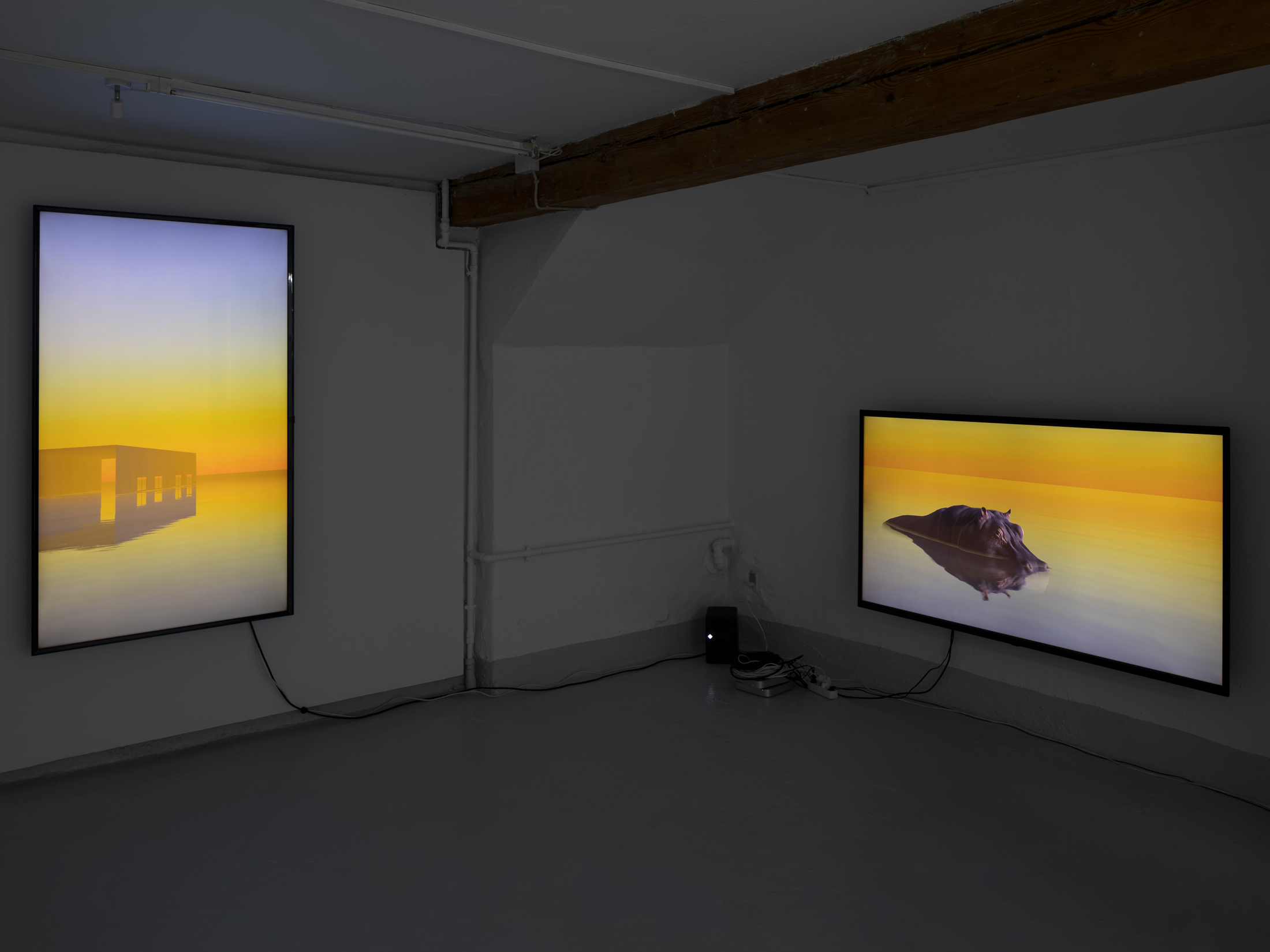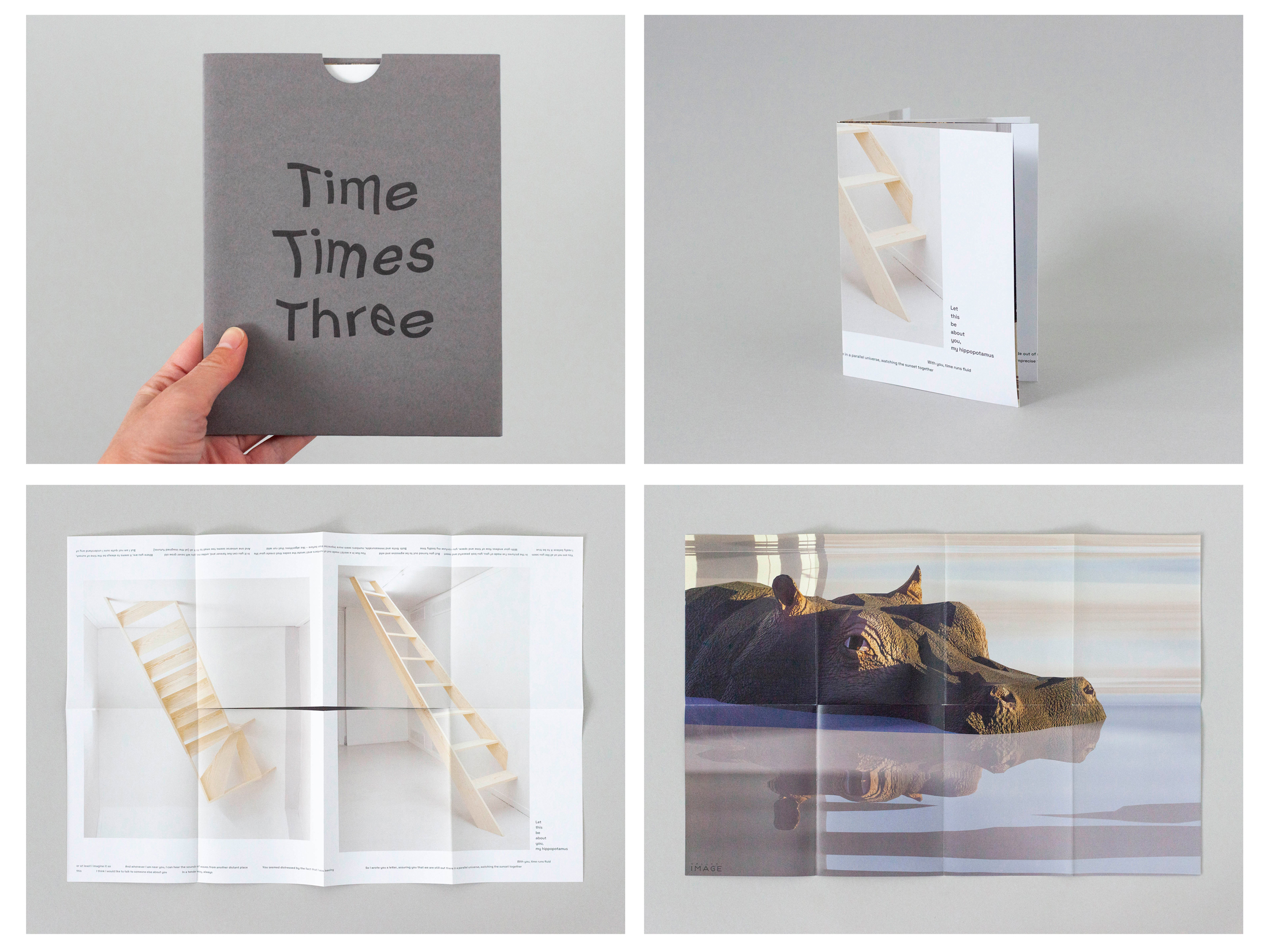On, Towards and in Front of Time
a thesis by Rebecca Krasnik
Published in All the best, Alice, November 30, 2018 https://www.mfaphoto.sva.edu/alice/2018/11/30/rebecca-krasnik-18

Temporal Advances
László Moholy-Nagy, one of photography’s great visionaries, once stated that the “scientific and technological advances [of photography] almost amount to a psychological transformation of our vision.” Relatively simple advances in mechanics and science unveiled remarkable new ways of seeing a once- familiar world. For Moholy-Nagy, this “trained our powers of observation to a higher standard of visual perception than ever before. Photography imparts a heightened and increased power of sight in terms of time and space” (in Bell & Traub, 2015, p 70). In the years between 1880 and 1918, technological developments in photography and the moving image contributed to what Kern called a “reorientation” and a “transformation of the dimensions of life and thought” (1983, pp 1-2).
With this in mind, I intend for my installation, titled On, Towards and in Front of Time, to shed light on how computer-generated visuals differ from older forms of representation, and how this might affect our perception of the world today. Even though 3D computer-generated visuals mimic lens based media,
merge with them, and are used and understood within the same framework, they originate from completely different technical and theoretical concepts.
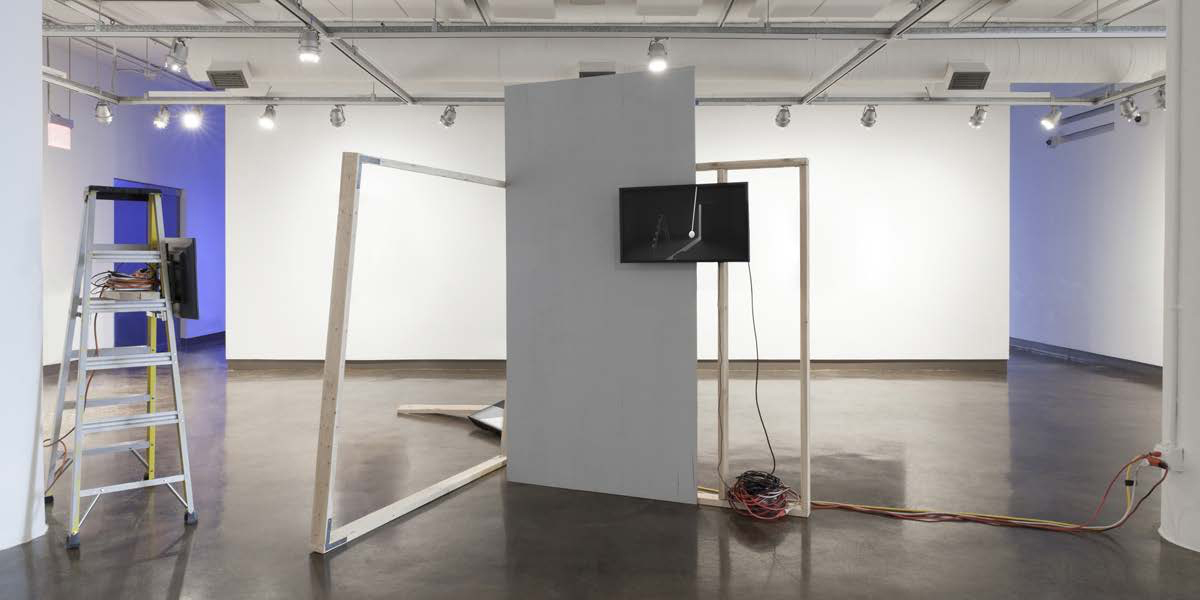
Technological advances in photography and video and the qualities that separate the two, has often given “rise to incompatible yet intertwined ideas about the truth of images and the understanding of time and motion” (Campany, 2008, p 22). What shapes our use and understanding of the media often stems from how the image relates to our experience of the word, and the critical question has often been how our experience of the world is best represented – is it by the static detail made visible by the still photograph, showing us what our eyes cannot see? Or is it by the reanimation of movements made possible by the moving image, showing us a more immediate form of our experience?
With 3D computer-generated visuals, a new form of representation is possible. Two qualities that differentiate it from older means of representation are its seemingly endless possibilities and its ability to run continuously and indefinitely. While a photograph is a collaboration between the photographer and the world in front of her, a 3D computer-generated image is a collaboration between the maker and her imagination and memory of the world. With 3D computer-generated visuals, there is no ‘real time’, no speed or slow-motion. Thereby the medium allows for a representation which is no longer dependent on external factors. This also allows for a temporal shift, from a time related to our body and earth’s rotation to a more fluid and individual time.
On, Towards and in Front of Time is an installation which consists of three computer simulations shown on three separate screens and a sound piece, all installed in a wooden structure.
The structure is an architectural space based on a grid-pattern, mimicking temporary walls – creating a fragmented room. It is a place in flux; simultaneously in a process of construction and deconstruction. Parts of the structure are not fastened but stand in balance – conveying a moment suspended in time.
In a search for the timeliness imbedded in computer-generated visuals I created three timescapes or scenes, which work as simulations. They are not set animations or video loops, but run by algorithms, like a videogame that plays itself. They can in theory run forever – that is, until the hardware breaks or the software crashes. They mimic reality, even though they are rooted more in my imagination than in the physical world.
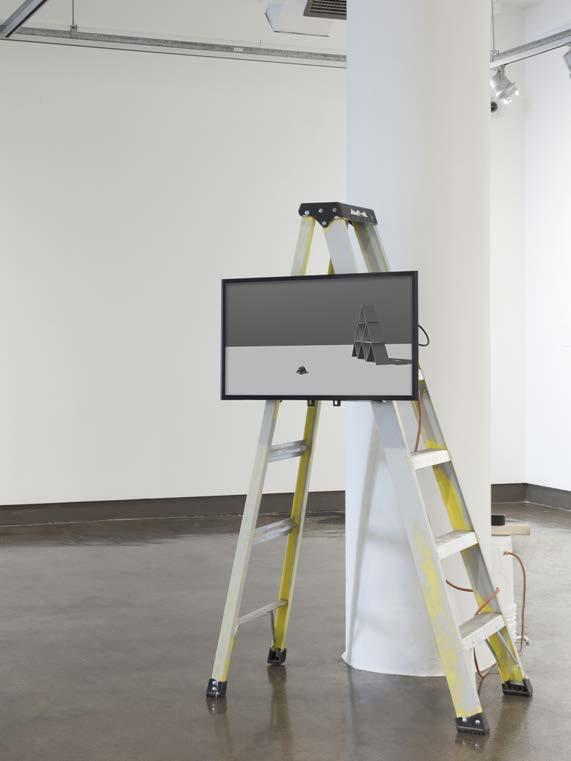
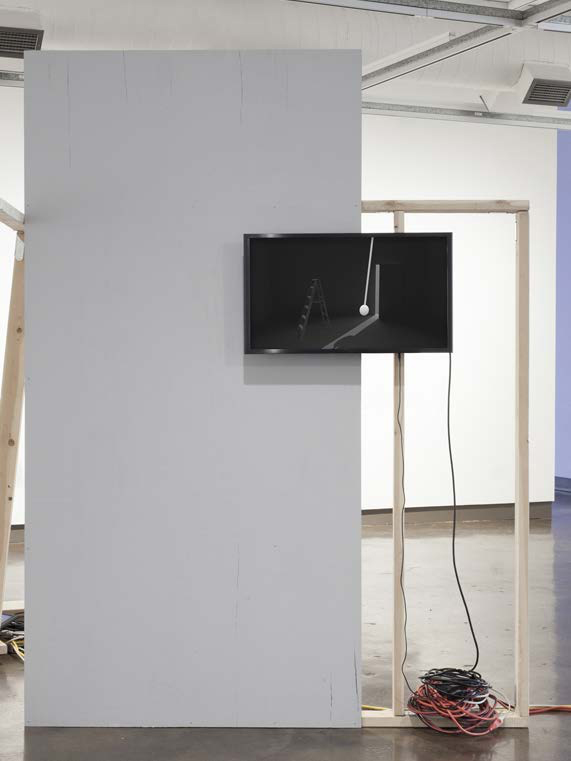
In one timescape, a turtle walks around in a seemingly eternal void. In another, a sphere rotates 360 degrees around a center, mimicing a clock moving in real time. On the third screen, a swinging pendulum hints to another means of time measurement. These symbols of time, which are grounded to earth, emphasize the lack of time within the computer-generated space – or rather its disconnect with the measured time we know. They do not follow the rhythm of real time, but follow a beat written in the algorithm that generates each one.
The sound piece emphasizes this disconnect further by telling the story of the New York Telephone Company’s Time Bureau. This was a service started in 1928, which provided New Yorkers with the correct time whenever they called. Offering callers access to the World Standard Time, the Time Bureau grew rapidly in popularity and reach as the telephone network expanded through the decades after its inception. The story consists of facts and statistics on the service, as well as fictitious anecdotes relating to these facts. It is a story about a search for a connection between a personal, subjective time and a collective, measured time. The sound piece in the installation thereby explores an example of how new technologies changed general perceptions of time in the beginning of the twentieth century from a local
based time to an inclusive global network of ‘now’. As Kern argues: “Telephone switchboards, telephonic broadcasts, daily newspapers, World Standard Time, and the cinema mediated simultaneity through technology. … In an age of intrusive electronic communication ‘now’ became an extended interval of time that could, indeed must, include events around the world.” (1983, p 314).
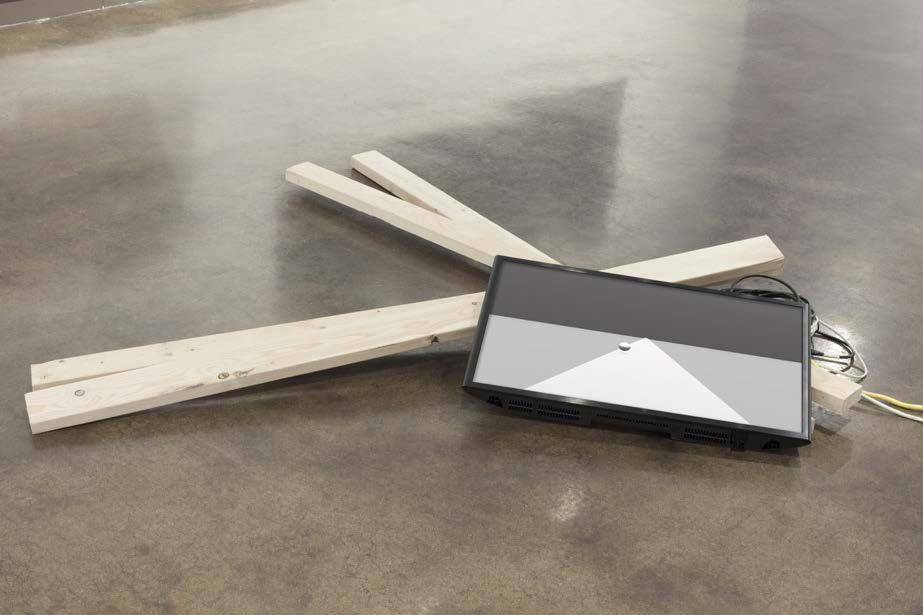
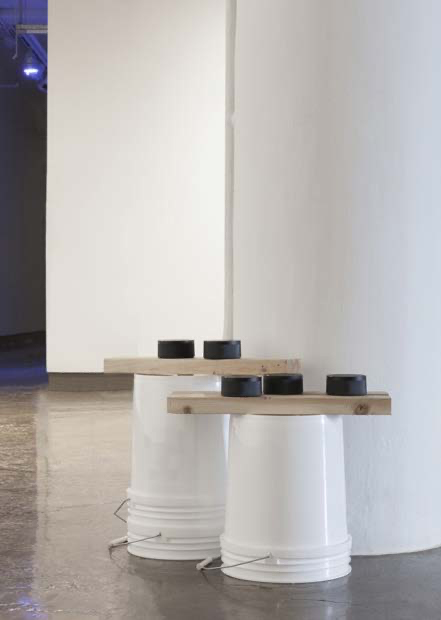
By juxtaposing the story of the Time Service with the 3D computer-generated simulations, placed in an unstable structure, I suggest that a similar shift in our perception of time is happening now. With the new temporal opportunities in 3D computer-generated images, times is more fluid, moldable, and indefinite. This widens our perspective; new possibilities occur and a reverse or a non-linear time is easier to imagine and much more likely to exist.
Maybe what I suggest we are seeing now is merely a continuation of reactions and questions that arose around turn of the twentieth century. But as computer generated visuals continually become a bigger part of how we create images of the world and how we see it represented, I find it fascinating to engage with this relatively new medium and to experiment with what I think are new temporal opportunities.
Rebecca Krasnik
New York City, October 20, 2018
